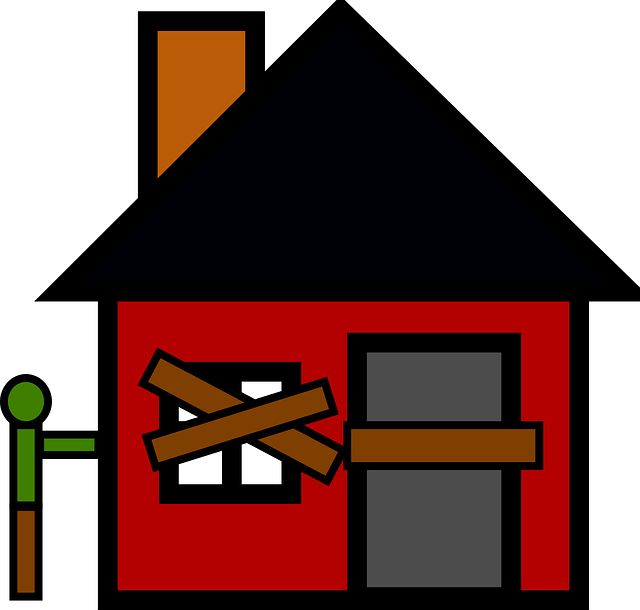What are red flags in a home inspection?
During a home inspection, the inspector assesses the property’s condition and identifies potential issues or “red flags” that could indicate significant problems or safety hazards. While some issues might be minor and easily fixable, others could be more serious and costly to address. Here are some common red flags to look out for during a home inspection:
- Foundation Problems: Cracks in the foundation, uneven floors, or doors and windows that do not close properly can indicate foundation issues, which may be expensive to repair.
- Water Damage: Stains on walls or ceilings, mold or mildew growth, musty odors, or signs of water pooling around the property can indicate water intrusion problems that may lead to structural damage and health issues.
- Roof Issues: Damaged or missing shingles, sagging rooflines, signs of water damage in the attic, or evidence of leaks are red flags that the roof might need repairs or replacement.
- Electrical Problems: Outdated or unsafe electrical systems, faulty wiring, exposed wires, or inadequate electrical panels can pose fire hazards and require immediate attention.
- Plumbing Concerns: Leaking pipes, low water pressure, water discoloration, and improper drainage can lead to water damage, mold growth, and plumbing system failures.
- HVAC System Deficiencies: Inefficient or malfunctioning heating, ventilation, and air conditioning systems can result in high energy bills and discomfort.
- Pest Infestations: Evidence of termites, rodents, or other pests can cause damage to the structure and require pest control measures.
- Structural Integrity: Cracked walls, uneven floors, and signs of settling could indicate structural problems that need evaluation and repair.
- Safety Hazards: Unsafe stairways, handrails, guardrails, or potential lead paint or asbestos presence may pose risks to occupants.
- Insufficient Insulation and Ventilation: Inadequate insulation and ventilation can impact energy efficiency and lead to moisture-related issues.
- Environmental Concerns: Presence of radon, lead-based paint, asbestos, or other hazardous materials can require professional remediation.
- Age and Condition of Appliances: Aging or poorly maintained appliances may need repair or replacement soon.
- Poor Drainage and Grading: Improperly sloped landscape and poor drainage can lead to water pooling near the foundation, potentially causing damage over time.
- Structural Additions or Renovations: Unpermitted or poorly executed renovations and additions might not comply with building codes and regulations.
Keep in mind that a home inspection report may include a mixture of minor issues and significant red flags. It is crucial to review the report thoroughly with the help of a professional, such as a qualified real estate agent or a licensed contractor, to determine which issues require immediate attention and negotiation with the seller. Understanding the home’s condition empowers you to make an informed decision before finalizing the purchase.

How You Can Prepare for a Home Inspection
Preparing for a home inspection checklist involves gathering essential documents and making sure the property is in good condition for the inspection. Here’s a step-by-step guide to help you prepare effectively:
- Gather Property Documents: Collect all relevant documents related to the property, such as the property survey, floor plans, permits for renovations or additions, warranties for appliances or systems, and any previous inspection reports.
- Clear Access to All Areas: Ensure the inspector can access all areas of the property, including the attic, crawl spaces, basement, garage, and any outbuildings. Clear away any obstructions that could hinder the inspection.
- Utilities and Appliances: Make sure all utilities, including electricity, water, gas, and HVAC systems, are turned on and in working order. Ensure appliances like the stove, oven, dishwasher, and any other built-in devices are also functional.
- Clean and Tidy the Property: Clean the property thoroughly, both inside and outside. A clean home can give a positive impression and make it easier for the inspector to access various areas.
- Address Minor Repairs: Fix any minor issues that you are aware of, such as leaky faucets, loose handrails, or faulty light fixtures. While these may seem minor, addressing them can show that the property is well-maintained.
- Check for Safety Hazards: Identify and address potential safety hazards, such as loose wires, exposed electrical outlets, tripping hazards, or unstable handrails.
- Prepare Maintenance Records: Keep a record of regular maintenance and servicing for the HVAC system, electrical systems, plumbing, and other essential components. This can help demonstrate that you have taken care of the property.
- Provide Access to Previous Inspection Reports: If there were previous inspection reports and you have made repairs based on those findings, make those reports available to the current inspector.
- Remove Personal Belongings: Clear out personal belongings and clutter to allow the inspector to focus on assessing the property’s condition.
- Inform the Inspector About Specific Concerns: If you have specific concerns about the property, such as a history of water intrusion or pest problems, inform the inspector beforehand. They can pay closer attention to these areas during the inspection.
- Accompany the Inspector: Whenever possible, attend the inspection or have your real estate agent present. This allows you to ask questions and gain a better understanding of the inspector’s findings.
- Be Open and Honest: Be transparent about any known issues with the property. It’s better to address them upfront rather than trying to hide them.
Remember that a home inspection is not meant to be a pass/fail test for the property. It’s an opportunity to gain insight into the condition of the home and identify any significant issues that may need attention. By adequately preparing for the inspection, you can help ensure a smoother process and potentially increase confidence in the property for potential buyers or tenants.

Is it normal to be nervous about a home inspection?
Yes, it is entirely normal to feel nervous about a home inspection, especially if you are the seller or the potential buyer of the property. Home inspections are significant events in the real estate process, and they can evoke various emotions and concerns for both parties involved. Here are some reasons why people may feel nervous about a home inspection:
- Unknown Issues: The fear of the unknown is a common cause of nervousness. Home inspections are designed to uncover potential problems with the property, and both sellers and buyers may worry about what issues the inspector might find.
- Financial Implications: Depending on the inspection findings, there could be financial implications for the buyer or the seller. Buyers might worry about unexpected repair costs, while sellers may be concerned about negotiating repairs or adjusting the sale price.
- Impact on the Transaction: For both buyers and sellers, the inspection results can have a significant impact on the real estate transaction. Buyers may consider whether they should proceed with the purchase or renegotiate terms, while sellers may worry about the deal falling through.
- Time and Effort Invested: The home buying or selling process can be emotionally and physically taxing. A lot of time and effort goes into finding the right property or preparing a home for sale, and a negative inspection report can feel like a setback.
- Attachment to the Property: Sellers who have lived in the home for a long time might feel sentimental about the property and be anxious about how it will be evaluated.
- Pressure to Get It Right: Both buyers and sellers want a successful outcome, and the home inspection is a critical step in the process. The pressure to get everything right can lead to nervousness.
Despite feeling nervous, it’s essential to remember that home inspections are a standard part of the buying and selling process. They are conducted to protect both the buyer’s and seller’s interests by providing an objective assessment of the property’s condition.
To help ease nervousness about a home inspection, here are some tips:
- Be Prepared: Get informed about the home inspection process beforehand so that you know what to expect.
- Choose a Qualified Inspector: Hire a reputable and experienced home inspector to conduct the inspection.
- Attend the Inspection: If possible, attend the inspection, ask questions, and seek clarification on any issues.
- Stay Positive: Keep in mind that most homes have some issues, and many of them can be resolved with proper negotiation or repairs.
- Work with Professionals: Rely on the expertise of your real estate agent and other professionals to guide you through the process.
Remember that a home inspection is an opportunity to identify any potential problems and make informed decisions about the property. By being proactive and addressing issues transparently, both buyers and sellers can move forward with greater confidence.

Are you ready to take the next step to buy(or sale) your home and start building a legacy for your family?…Let me help you!
“Your Dream Home is my Mission”. I am a Brazilian Licensed Realtor at Re-Connect, LLC with 18+ years of experience in the Real Estate industry. I speaks 3 languages (Portuguese, English, Spanish). Let me join your journey in the Real Estate Industry, and receive my assistance above and beyond to accomplish your DREAM!
CALL NOW: (617) 201-9188 Ana Roque | 209 West Central Street, Natick, MA









